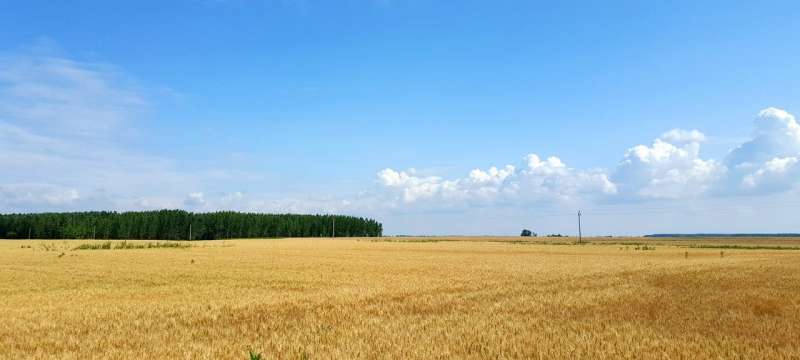
Over the course of 12 months, an area of Great Plains grasslands bigger than the state of Delaware was erased from the map.
In 2021 alone, 1.6 million acres were plowed across the United States and Canada to make way for primarily row crop expansion, according to the World Wildlife Fund’s annual Plowprint Report. The report analyzed grasslands plow-up in North America using government data and satellite imagery from the past two years.
Since 2012, the region has had 32 million acres of its landscapes destroyed. But the land most suited for farming in the Great Plains was plowed up decades ago, according to WWF, and newly plowed land is not likely to produce significant yields.
Yet grasslands continue to be treated as useless until they are converted into fields for agricultural use.
Clay Bolt, manager of communications for WWF’s Northern Great Plains program, said the importance of the grassland ecosystem is hard for people to grasp because much of the work is happening underground.
Bolt said that grasslands have large and ornate root systems that resemble something like “an upside-down forest” and trap carbon underground. When these plants are plowed, the soil is turned over and that carbon is released into the atmosphere. Crops that are grown in their place, such as corn or soybeans, typically have shallow roots and do not have the capacity to store carbon.
“It’s a loss to those areas that normally in the past would have been like a bank for storing that carbon,” Bolt said.
Most grassland plowing has been occurring on private land as landowners have the option to plow, whether to make room for crops or commercial development.
For instance, in March the Rockford International Airport began construction in the Bell Bowl Prairie, home of the endangered rusty patched bumblebee, to make way for a roadway.
Meanwhile, very little federal-owned land can be plowed, Bolt said. In Illinois, the Midewin National Tallgrass Prairie, about an hour outside Chicago, serves as an example of nearly 9,000 acres of protected grassland.
Once grassland is plowed, habitats can be destroyed for good, Bolt said, as it “takes a tremendous amount of effort” or is impossible to restore the ecosystem.
With a new farm bill in the works to govern agricultural sector policy for the next five years, and with the introduction of the North American Grasslands Conservation Act, advocates and experts hope they will see new resources and strategies dedicated to supporting Great Plains producers and farmers and slowing grassland conversion rates. The WWF points to the wetlands bill as a potential blueprint for grassland conservation legislation.
In the last few years, climate change, a pandemic, supply chain disruptions and inflation have significantly challenged the food and farm systems in the country.
These hurdles have motivated farmers and workers to advocate for financial investment and protections in legislation, such as the next farm bill, that will allow them to fund conservation programs and increase crop resiliency.
Conservation programs that encourage climate change mitigation would, in turn, help improve water quality, keep carbon in the soil and minimize soil erosion in farmland and grasslands across the country.
2023 Chicago Tribune. Distributed by Tribune Content Agency, LLC.
1.6 million acres of Great Plains grasslands were destroyed in 2021 alone, World Wildlife Fund says (2023, October 28)
retrieved 28 October 2023
from https://phys.org/news/2023-10-million-acres-great-plains-grasslands.html
part may be reproduced without the written permission. The content is provided for information purposes only.